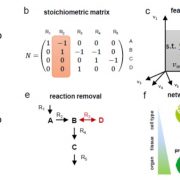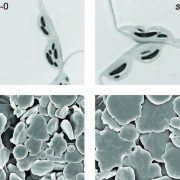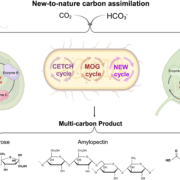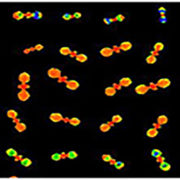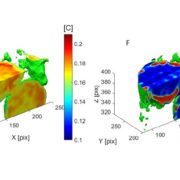Mineral Deposits in Ficus Leaves
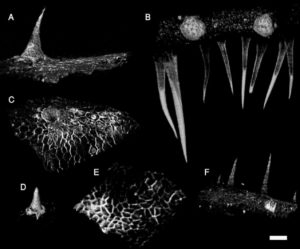 Mineral deposits occur in many, but not all plant leaves. In those leaves that do have minerals, the mineral type, morphology and the distributions within the leaves are under strict control. In fact, mineralization in certain leaves is a well-preserved trait throughout evolution, indicating that such controlled mineralization is advantageous. The most widespread leaf minerals are silica and calcium oxalate, and to a lesser extent amorphous calcium carbonate. Many roles have been ascribed to calcium oxalates in leaves, including calcium regulation, detoxification of heavy metals, leaf defense and an internal CO2 source. Silica deposition (phytoliths and small particles) can occur in any part of the leaf epidermis, leaf mesophyll and in the vascular tissue. Cystoliths are calcified bodies composed of hydrated amorphous calcium carbonate deposited in specialized epidermal cells. In many plant species cystoliths or calcium oxalates function as light scatterers, increasing the leaf photosynthetic yield. Ficus leaves can deposit one or more of these major mineral types found in leaves. In order to better understand the functions of these minerals and the control that the leaf exerts over mineral deposition Pierantoni et al. (10.1104/pp.17.01516) investigated leaves from 10 Ficus species from vastly different environments. They report that each Ficus species is characterized by a unique 3D mineral distribution, which is preserved in different environments. The mineral distribution patterns are generally different on the adaxial and abaxial sides of the leaf. All species examined have abundant calcium oxalate deposits around the veins. The authors used micro-modulated fluorimetry to examine the effect of cystoliths on photosynthetic efficiency in two species having cystoliths abaxially and adaxially (F. microcarpa) or only abaxially (F. carica). In F. microcarpa both adaxial and abaxial cystoliths efficiently contributed to light redistribution inside the leaf and hence increase photosynthetic efficiency, whereas in F. carica the abaxial cystoliths do not increase photosynthetic efficiency.
Mineral deposits occur in many, but not all plant leaves. In those leaves that do have minerals, the mineral type, morphology and the distributions within the leaves are under strict control. In fact, mineralization in certain leaves is a well-preserved trait throughout evolution, indicating that such controlled mineralization is advantageous. The most widespread leaf minerals are silica and calcium oxalate, and to a lesser extent amorphous calcium carbonate. Many roles have been ascribed to calcium oxalates in leaves, including calcium regulation, detoxification of heavy metals, leaf defense and an internal CO2 source. Silica deposition (phytoliths and small particles) can occur in any part of the leaf epidermis, leaf mesophyll and in the vascular tissue. Cystoliths are calcified bodies composed of hydrated amorphous calcium carbonate deposited in specialized epidermal cells. In many plant species cystoliths or calcium oxalates function as light scatterers, increasing the leaf photosynthetic yield. Ficus leaves can deposit one or more of these major mineral types found in leaves. In order to better understand the functions of these minerals and the control that the leaf exerts over mineral deposition Pierantoni et al. (10.1104/pp.17.01516) investigated leaves from 10 Ficus species from vastly different environments. They report that each Ficus species is characterized by a unique 3D mineral distribution, which is preserved in different environments. The mineral distribution patterns are generally different on the adaxial and abaxial sides of the leaf. All species examined have abundant calcium oxalate deposits around the veins. The authors used micro-modulated fluorimetry to examine the effect of cystoliths on photosynthetic efficiency in two species having cystoliths abaxially and adaxially (F. microcarpa) or only abaxially (F. carica). In F. microcarpa both adaxial and abaxial cystoliths efficiently contributed to light redistribution inside the leaf and hence increase photosynthetic efficiency, whereas in F. carica the abaxial cystoliths do not increase photosynthetic efficiency.



